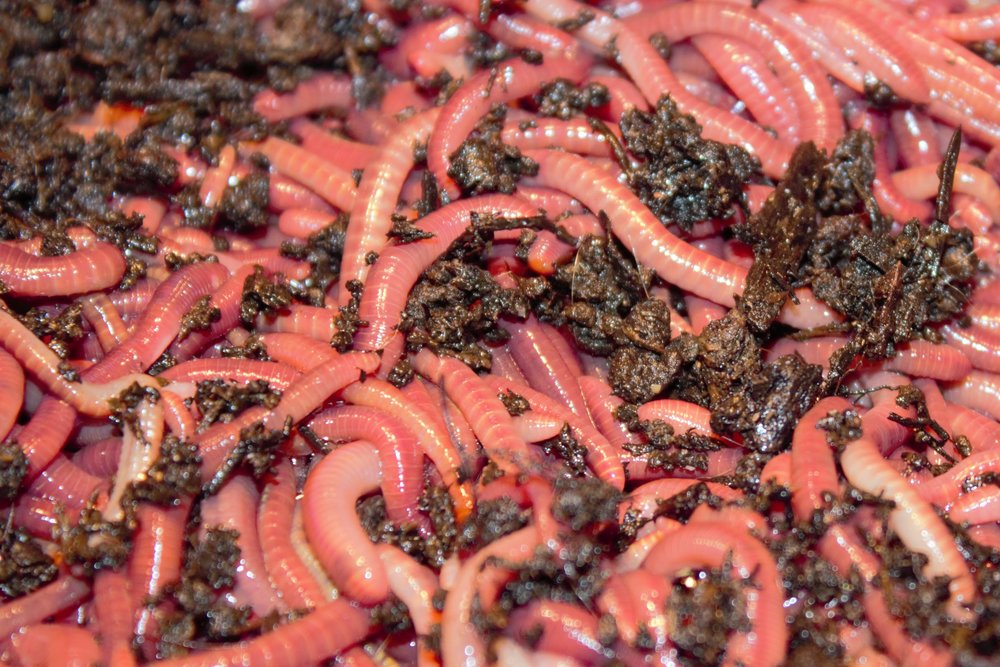Making Use Of Red Wigglers for Effective Organic Waste Disposal
The use of red wigglers for natural waste disposal presents an engaging technique to handling food scraps while advertising ecological sustainability. These worms not only boost waste decay however likewise generate useful worm castings, which can substantially improve dirt health. Their ability to process big volumes of organic material with very little effort settings them as an accessible option for homes and neighborhoods alike. Recognizing the nuances of establishing up an effective worm bin and maintaining an ideal environment is vital for optimizing their benefits. The next steps in this process may stun you.
Advantages of Utilizing Red Wigglers
One of the most engaging advantages of making use of red wigglers for organic garbage disposal is their impressive effectiveness in composting. These worms, clinically known as Eisenia fetida, are particularly adjusted for damaging down organic products, enabling them to refine waste approximately two times their body weight each day. This quick disintegration not only increases the composting process however likewise produces nutrient-rich worm castings that substantially boost soil high quality.
In addition, red wigglers add to a decrease in landfill waste. By diverting organic products from garbage dumps, they assist reduce methane emissions-- a powerful greenhouse gas. This eco-friendly advantage is critical in the battle versus climate modification.
Moreover, red wigglers are low-maintenance and can grow in numerous environments, making them obtainable for both newbie and experienced composters. Their ability to recreate swiftly ensures a consistent population, assisting in recurring waste handling.
Establishing Up Your Worm Bin
Producing a reliable worm bin is vital for taking full advantage of the advantages of composting with red wigglers. The initial step is selecting a proper container. A bin made of plastic or timber, with a capacity of 10 to 20 gallons, is optimal. Make certain the container has sufficient drain openings to protect against excess dampness, as red wigglers thrive in a wet but not soaked atmosphere.
(Lake James Bait)Following, prepare the bed linens material, which offers as the worms' environment and food resource. The bin must be placed in a dark, temperature-controlled area, ideally between 55 ° F and 77 ° F, to maintain worm activity.
Once the bin is established up, introduce the red wigglers, allowing them to adapt to their brand-new setting. It's essential to keep an eye on moisture levels and temperature routinely. A well-maintained container will certainly not just sustain the health of the worms however also promote efficient decay of organic waste. By following these guidelines, you can create a flourishing ecological community that contributes to lasting waste administration.
(red wigglers for sale)
What to Feed Red Wigglers
An understanding of the appropriate diet plan for red wigglers is crucial for keeping a healthy worm populace and enhancing composting efficiency. These items not just offer necessary nutrients yet also contribute to the wetness equilibrium within the worm container.
It is crucial to stay clear of specific foods that can hurt the worm population. Red wigglers should not be fed meat, milk items, oily foods, or processed things, as these can draw in pests and develop unpleasant smells. red wigglers. Additionally, citrus fruits and zesty foods ought to be minimized, as their level of acidity can be detrimental to worms
To advertise optimal digestion, food needs to be chopped right into smaller sized pieces, facilitating quicker breakdown and intake. Presenting food in moderation is likewise crucial; overfeeding can bring about anaerobic conditions and bring in unwanted parasites. Keeping an eye on the worm bin for food consumption prices will certainly assist ensure that red wigglers are getting an appropriate diet regimen while keeping a reliable composting setting. Proper feeding techniques are crucial for cultivating a flourishing ecological community within the worm container.
Keeping Your Worm Environment
A properly maintained worm habitat is vital for the health and wellness and efficiency of red wigglers. To make sure optimum conditions, it is crucial to keep an eye on temperature, dampness, and oygenation within the worm bin (red wigglers).
An excellent regulation of thumb is to maintain wetness at around 70% to 80%. If the bedding becomes too wet, it can lead to anaerobic conditions that are dangerous to the worms.

Using Worm Spreadings in Gardening
Rich in nutrients and valuable bacteria, worm castings act as an extraordinary natural fertilizer for horticulture. Created with the digestion procedures of red wigglers, these spreadings include an array of important nutrients, including nitrogen, phosphorus, and potassium, which promote durable plant growth. Unlike artificial plant foods, worm castings offer a slow-release mechanism, ensuring that nutrients are available to plants over an extended period, thereby decreasing the threat of nutrient leaching and dirt deficiency.
Along with nutrient content, worm castings enhance dirt structure and oygenation, enhancing wetness retention and drain. The microbial life existing in worm spreadings assists to reduce microorganisms and promotes a healthy soil community, further benefiting plant health. When included right into the soil or used as a leading clothing, worm spreadings can considerably boost seed germination prices, origin advancement, and total plant vigor.
For optimal results, garden enthusiasts need to apply worm spreadings at a price of 1-2 inches per square look at here foot, blending them into the dirt or incorporating them right into potting blends. Overall, using worm castings is an eco-friendly technique to enhancing dirt fertility and guaranteeing growing garden settings.
Final Thought
